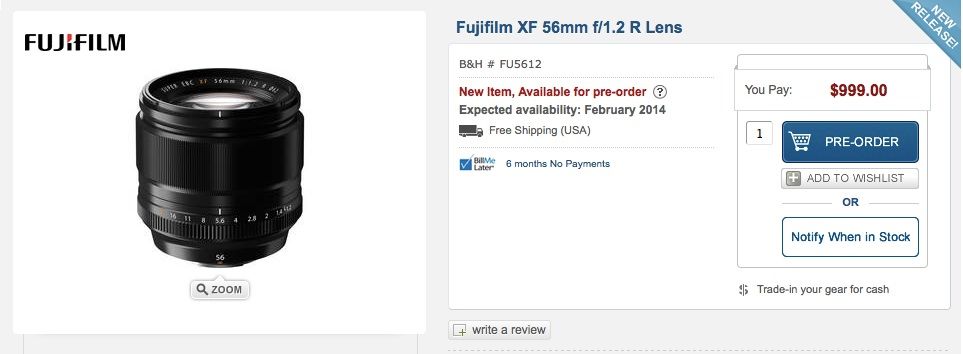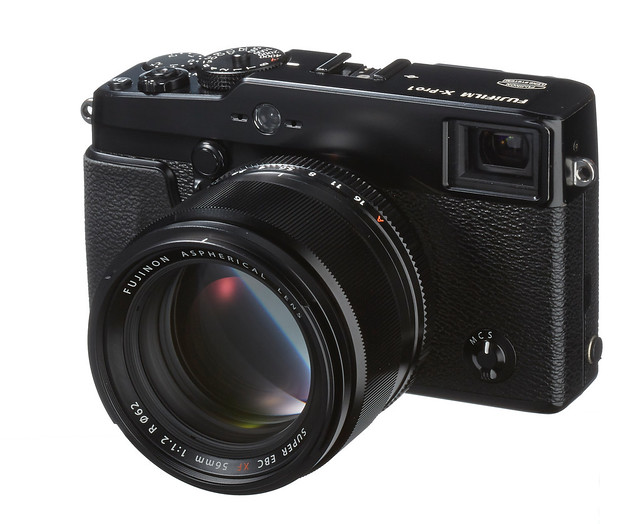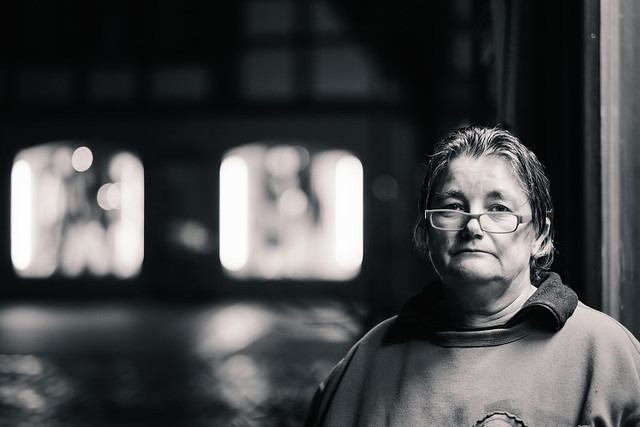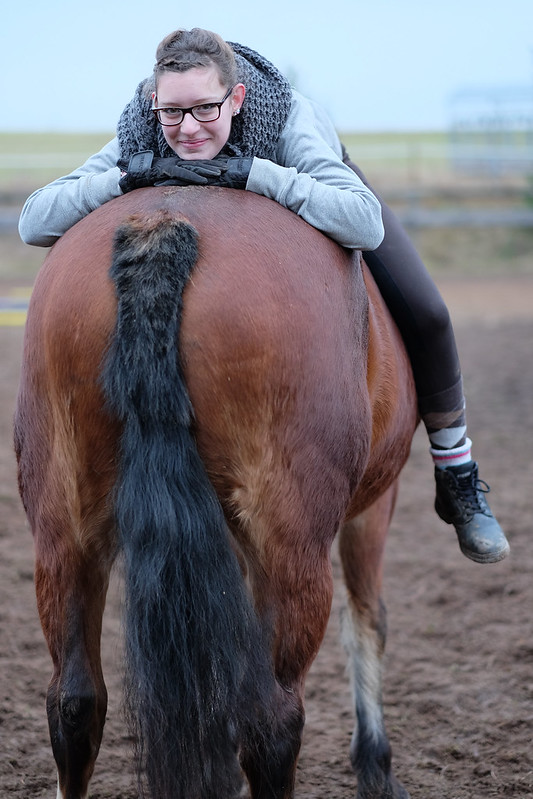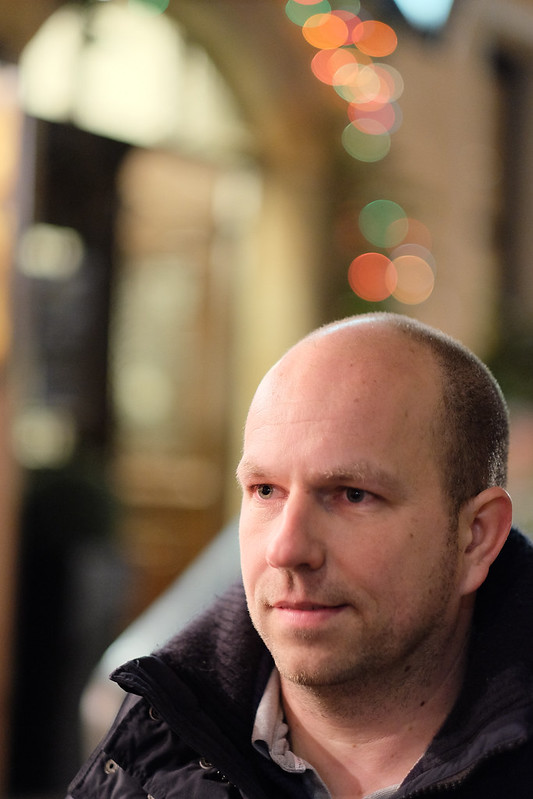First Look: Fujinon XF56mmF1.2 R
XF 56mm f/1.2 ($999): USA AmazonUS / BHphoto / Adorama / DigitalRev / – EUROPE: wexUK / wexDE / PCHstore / DigitalRev
X-T1 coming at 04:30 AM London Time, this Tuesday, January 28th (11:30 PM, January 27th, New York).
—
First Look: Fujinon XF56mmF1.2 R
Talk to Rico (open forum for questions & feedback)
Rico’s Flickr sets
XF56mmF1.2 R Samples –XQ1 Sample Images Set – X-E2 Sample Images Set – X-E2 AF tracking samples
Mastering the Fujifilm X-Pro1 reading samples (65 free pages) – Mastering the Fujifilm X-E1 and X-Pro1 –
The Fujifilm X-E2 – Beyond the Manual (pre-order)
January has been abuzz with product announcements and rumors. As you may expect, I will soon post another First Look X-Pert Corner article about the X-“you know what”, so let’s begin the week with a quick look at the new Fujinon XF56mmF1.2 R prime (click here for specs), a typical 85mm full-frame equivalent “portrait lens” with shallow depth-of-field for superior subject/background separation.
Please click in the sample images to see larger viewing options, or click here to see the full sample set.
With a bright maximum aperture of f/1.2, the lens is also suitable for available light photography. However, this bonus feature is somewhat offset by the lack of optical image stabilization. For crisp hand-held shots, one would typically use shutter speeds north of 1/80s. However, I managed to achieve pleasing results with speeds as low as 1/40s:
The XF56mm isn’t cheap by any means , but it may well be Fuji’s best X-Mount prime so far. Like it’s 14, 23 and 35mm siblings, it is fully optically corrected with a solid build, but still lightweight enough to fit well into the mirrorless tribe. It comes with aperture and focus rings (both “fly by wire”, as usual), and it really is—at least for me—a joy to use. Even wide open, I found the results of my January-built pre-production sample highly convincing. While minor axial chromatic aberration can sometimes be visible wide-open, there’s no visible distortion and no field curvature.
Autofocus is on the snappy side and fully compatible with the ever-improving hybrid PDAF/CDAF system of the X-E2 and future Fujifilm X-Mount cameras. And as you will soon find out here on X-Pert Corner, the XF56mm also does a very good job as an action lens. Who’d have thought?
The lens comes with a classic plastic hood that fits quite nicely. You can leave the hood on when you use the built-in flash of the X-E1 or X-E2. I didn’t spot any vignetting or shading in a quick test.
All five current X-Mount models (X-Pro1, X-E1, X-M1, X-A1, X-E2) will receive a camera body firmware upgrade to perfectly support the XF56mm lens. That said, I shot most of my samples with an X-E2 and firmware 1.10 (still the official firmware version for this camera), skipped the intermediary firmware version 1.11 that Fuji and serveral X photographers used to produce official sample images, and directly migrated to version 1.20.
Naturally, many users contemplate trading in their existing XF60mmF2.4 R Macro lenses for this new baby. But let’s be clear: With a minimum focus distance of about 70 cm, the XF56mmF1.2 R has no macro capability. Instead, you get two distinct advantages:
- It’s 2 stops brighter with great low light capabilities and shallow depth-of-field.
- It offers superior AF performance with both standard CDAF and hybrid CDAF/PFAF cameras.
Don’t forget that there’s another lens with a very similar focal length in the pipeline: the Zeiss Touit 55mmF2.8 macro lens with 1:1 magnification. So with 55mm, 56mm and 60mm prime lens offerings, that particular playing field looks pretty crammed. Not to mention four different XC and XF zooms that also cover the 50-55mm range, with more to come! But hey, what’s new? Just look at the 27mm, 32mm and 35mm X-Mount offerings from Zeiss and Fujifilm: The focal lengths may sound quite similar, but the lenses’ characteristics and size factors are not.
You may want to have a look at my little set of sample images, most of them shot wide open—partly to see how the lens performs at minimal depth-of-field, partly out of necessity because there simply was no light. And also partly out of pre-emptive self-defense, because any image taken with a smaller aperture would inevitably lead to readers asking me how that particular shot would have looked like wide-open. ;)
Of course, too much can be too much! With such a shallow depth-of-field, it’s sometimes quite impossible to get everything in focus that you want to be in focus. Just look at this example, where I had to pick an eye. I guess my choice was wrong:
On the other hand, with some distance to your subject, you can even use the XF56mmF1.2 R wide-open to capture an entire street scene:
Let’s summarize my first impressions after one week with a pre-production sample of the lens:
- It’s well built. And while it’s certainly not tiny, it’s not as heavy as it looks.
- Even wide open, it delivers very crisp results.
- It’s fully optically corrected with pretty much no visible distortion or field curvature (even wide-open, it’s sharp to the edges).
- Autofocus is snappy and suitable for action photography.
- It may be Fuji’s best X-Mount lens so far.
That’s all for now, but please stay tuned, as you will soon be able to see more samples.
For your convenience, here’s a TOC with links to my previous X-PERT CORNER articles:
- Exposing Right
- Using Auto-ISO
- Using Face Detection
- First Look: Fujifilm XQ1
- PDAF & LMO Lens Firmware Updates Coming in November
- First Look: Fujifilm X-E2
- How Fuji could save the X-M1
- X-A1 vs. X-M1: Photo Ninja Edition
- X-A1 vs. X-M1: the Shootout
- Using the Fujifilm X-A1 [& X-M1]
- First Look: Fujinon XF23mmF1.4 R
- RAW Converter Shootout Results
- Ultimate RAW Converter Shootout
- First Look: X-M1 with New Kit Zoom and Pancake Lens
- Zeiss Touit vs. Fujinon XF
- Remote Shutter Control for X Series Cameras
- Apple Camera RAW, X-Trans and EXR
- First Look: XF55-200mmF3.5-4.8 R LM OIS
- Studio X
- Using the X100S
- Using the X20
- X100S vs. X100
- X20 vs. X10
- RAW, JPEG, Silkypix and “Fuji Colors”
- Adapting Third-Party Lenses (updated with Speed Booster)
- RAW for JPEG Shooters…
- Tips for Updating your Firmware
- How to Clean the X-Trans Sensor
- Using the XF14mmF2.8 R
- Decoding XF18-55mmF2.8-4 R LM OIS
- Comparing RAW converters: JPEG vs. Lightroom, Capture One, Silkypix & RPP
- XF14mmF2.8 R appears to be almost distortion free
- How to Expand Dynamic Range
- How to Use Extended ISO
- EXR, anyone?
- Capture One – When the Going Gets Tough…
- Using Shooting Profiles and the Quick Menu
Rico Pfirstinger studied communications and has been working as journalist, publicist, and photographer since the mid-80s. He has written a number of books on topics as diverse as Adobe PageMaker and sled dogs, and produced a beautiful book of photographs titled Huskies in Action (German version). He has spent time working as the head of a department with the German Burda-Publishing Company and served as chief editor for a winter sports website. After eight years as a freelance film critic and entertainment writer in Los Angeles, Rico now lives in Germany and devotes his time to digital photography and compact camera systems. His book “Mastering the FUJIFILM X-Pro1” (Kindle Edition) (Apple iBook Store) (German version) is available on Amazon and offers a plethora of tips, secrets and background information on successfully using Fuji’s X-Pro1 and X-E1 system cameras, lenses and key accessories.


